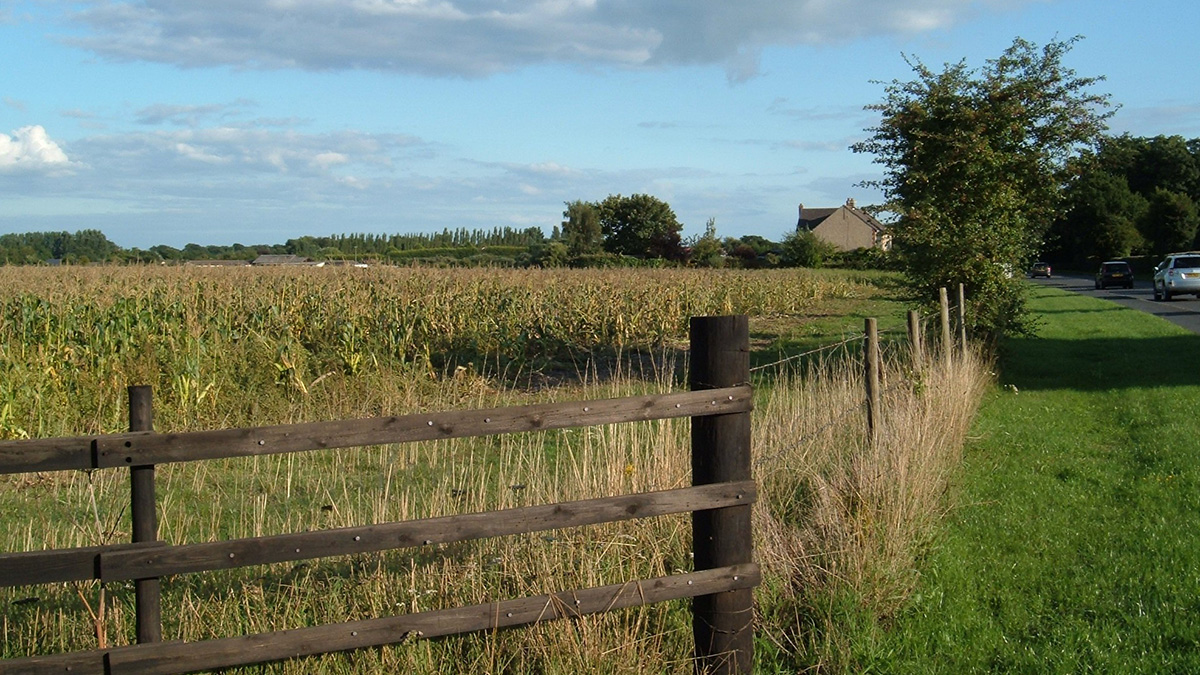Eleven years ago, Galápagos National Park rangers awoke to a sad sight: A Pinta Island tortoise known as Lonesome George had died. George was an endling—the last known representative of his species. As far as scientists know, there will never be another animal like him.
Around the world, a million species face a similar fate. Humans have significantly altered about 75% of Earth’s land, precipitating a biodiversity crisis that threatens everything from plants to insects to mammals.
“What we really need to think about is, Are we protecting the appropriate land in the appropriate place?”
At last year’s United Nations Biodiversity Conference, representatives from almost every country in the world signed on to an ambitious agenda to stem the global loss of biodiversity. They aim to designate at least 30% of the world’s land and water for conservation purposes by the year 2030. The target, known as 30×30, would involve roughly doubling the amount of land currently under protection.
The move is aimed at averting disasters such as the loss of key pollinators, medicines, and food sources. But setting land aside comes with trade-offs. In a recent GCB-Bioenergy publication, Earth systems scientist Alan Di Vittorio at Lawrence Berkeley National Laboratory and his colleagues modeled how food and bioenergy production may change under the 30×30 framework.
The take-home message: “We have to be careful about just setting these blanket targets,” Di Vittorio said. “What we really need to think about is, Are we protecting the appropriate land in the appropriate place?”
Bioenergy as a Key Trade-Off
Di Vittorio and his colleagues made use of the Global Change Analysis Model, which considers the interplay between energy, water, land, climate, and the economy. The researchers varied the amount of land under protection, and the model figured out which uses would maximize the economic value of the remaining land.
Protecting 30% of land will likely reduce the area used for crops by 3% and that for bioenergy production (e.g., cutting trees for heating and growing corn for ethanol) by 10%, the model suggested. Meanwhile, harvested forests will be reduced by 1.7% and grazed pasture by 3.5%.
The idea that conserving natural landscape will reduce the land available for other uses is one that many people have discussed, said ecologist Carlos Carroll with the Klamath Center for Conservation Research, but few groups have considered bioenergy production. Di Vittorio and his colleagues showed that the deepest cuts are likely to occur in this sector, but the idea that bioenergy should be part of Earth’s energy future is “a fundamental assumption in the article that I would contest,” Carroll said.
He’s not alone: Over 750 scientists have signed a letter to world leaders calling for an end to using forests as bioenergy sources because the practice destroys biodiversity-rich forests and is unlikely to be carbon neutral, despite claims to the contrary. Corn-based biofuels also have come under fire because fertilizer runoff degrades water quality and the process of producing corn comes with substantial greenhouse gas emissions.
Targets Can’t Be Applied Uniformly
Designating areas for conservation opportunistically could meet the 30×30 numerical target while failing to achieve conservation goals, Di Vittorio and his colleagues pointed out. Northern Africa, for example, could easily achieve the target by setting aside arid regions that have little biodiversity.
That’s why applying the 30% target uniformly around the world is “not only not possible, but isn’t desirable,” said conservation ecologist Carly Vynne with the nonprofit Resolve. “Biodiversity is where it is. And so you have to protect it where it is,” she said.
Conserving the Amazon basin is critically important, for example; Vynne said she hopes to see much more than 30% of that land protected. The U.S. Midwest, on the other hand, is probably better suited for crop production, so there is no need to conserve 30% of that land, she added. Policymakers will need to work with local communities to make sure the distribution of conserved land is equitable and just while meeting conservation goals, Vynne said.
Nature and Agriculture Are Synergistic
The idea that protected ecosystems and other land uses are in a “zero-sum conflict” is something scientists and policymakers are trying to move past.
The idea that protected ecosystems and other land uses are in a “zero-sum conflict” is something scientists and policymakers are trying to move past, Carroll said. Natural spaces provide homes for pollinators, microbes that improve soil quality, and pest predators—such as birds and bats—that limit the need to treat crops with pesticides, said conservation scientist Lindsay Rosa with Defenders of Wildlife. Although setting aside land for conservation may appear to disrupt crop production, its overall effect could, in fact, be beneficial.
World leaders face tricky decisions as they implement 30×30, but “I don’t think it was meant to be an easy thing to do,” Rosa said. Di Vittorio’s advice: Policymakers should gather as much information as possible and “try to make the most informed decisions about which land to protect and why.”
—Saima May Sidik (@saimamaysidik), Science Writer

